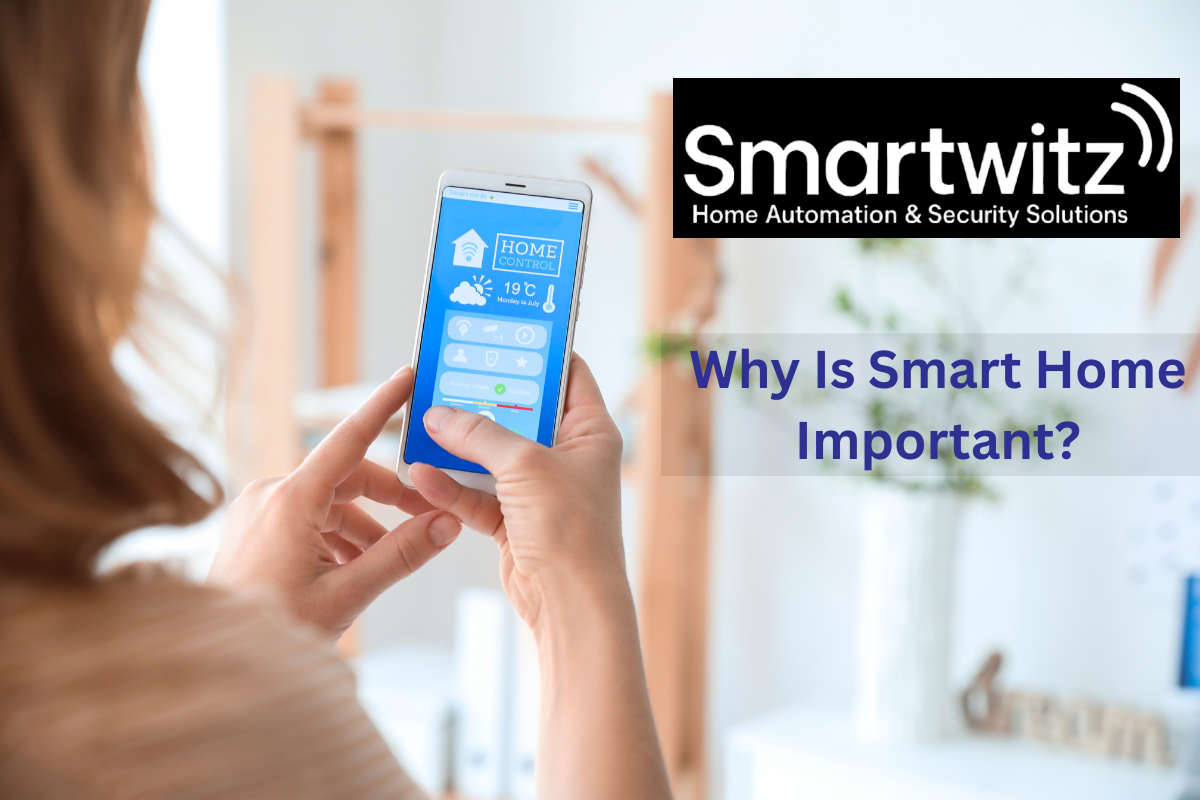Why Is Smart Home Important?

Overview of Smart Homes: The Living Environment of the Future
It is impossible to overestimate the significance of smart homes in today’s ever-evolving technology landscape. Smart home are the next big thing in residential innovation as we enter an era characterized by automation and connectivity. In order to ensure safety, efficiency, and unmatched convenience, these houses use Internet of Things (IoT) technology to create an interconnected environment where devices interact and function effortlessly.
Improved Safety and Security through Smart Home Technology
A smart home company in Navi Mumbai strong security system is one of its biggest benefits. With automated locks, motion sensors, doorbell cameras, and smart security cameras, homeowners can keep an eye on their property in real-time from any location. Because these devices provide high-definition video, two-way communication, and fast alarms, it is practically impossible for unwanted entry to go undetected.
Water leak detectors, gas leak sensors, and smart smoke detectors all increase safety by sending out instant alarms, averting possible catastrophes. These systems can also be set up to alert emergency services automatically, giving homeowners peace of mind.

Sustainability of the Environment and Energy Efficiency
Energy efficiency is greatly increased by a smart home ecosystem, which is ideal for achieving global sustainability objectives. Using real-time data and human behaviour, smart appliances, lighting controls, and thermostats optimize energy use. To cut down on wasteful energy use, a smart thermostat, for instance, may learn a home’s schedule and modify the heating or cooling.
When a room is empty, light automation home turn off, and smart plugs enable remote gadget deactivation, which lowers phantom energy consumption. The outcomes are a lesser environmental impact and a discernible decrease in utility bills.
Unrivalled Lifestyle Integration and Convenience
The core of the smart home revolution is convenience. Every element, from remote appliance control to voice-activated assistance, is made to make daily tasks easier. Smart homes provide customized experiences that accommodate personal tastes, whether it’s motorized blinds with a smartphone, starting a coffee maker from bed, or modifying the lighting for a movie night.
Hands-free device control is made possible by voice-activated systems such as Apple Siri, Google Assistant, and Amazon Alexa. This degree of automation and integration transforms a typical home into an intelligent living environment, bringing elegance and efficiency into daily life.
Real-time monitoring and remote access
Another characteristic that sets smart homes apart is remote access. Users can manage their homes remotely via centralized smartphone apps. Did you forget to switch off the oven? While you’re away, do you need to let someone in? Smart systems improve utility and security by offering complete remote control and access.
Instant diagnostics and troubleshooting are also made possible by real-time monitoring. For instance, smart washers may plan cycles during off-peak hours to save money, while smart refrigerators can notify customers of temperature changes or expiration dates.
Smart Houses and Place-Based Aging
The development of smart home technologies is especially significant for older people and those with disabilities. To guarantee a secure and self-sufficient existence, smart houses can be furnished with fall detectors, voice-activated systems, and health monitoring gadgets. Updates and notifications can be sent to family members and caregivers, enabling proactive care and action as needed.
Seniors can remain freely in their homes for longer thanks to medical warning systems, prescription reminders, and automated lighting, which lower the hazards associated with ageing.
Enhanced Marketability and Property Value
The market advantage of smart houses is becoming more and more apparent to real estate brokers. In addition to being more appealing to tech-savvy purchasers, properties with integrated smart technologies also fetch higher market values. Customers understand the advantages of convenience, security, and energy savings, which frequently result in higher returns on investment and quicker sales.
Additionally, incorporating smart home technology into a building or remodelling can greatly future-proof a property as these devices become more standardized and more reasonably priced.
Smooth Integration with Intelligent Grids
The development of smart grids depends heavily on smart houses, which also help save energy more broadly. By adjusting their energy consumption in response to grid signals, these homes can enhance energy distribution and lessen demand during peak hours.
A more reliable and robust power infrastructure is made possible by this two-way communication, which also minimizes blackouts and maximizes the integration of renewable energy sources.
Customization and Automated Prediction
Machine learning algorithms built into contemporary Home Automation Company in Gurgaon systems examine user preferences and usage trends to provide predictive automation. This implies that your house learns your habits and adjusts on its own, like turning down the lights at night or heating the bathroom before your morning shower.
This degree of customization creates a profound sense of comfort and control in addition to improving the user experience. As your lifestyle changes, your house adapts to your routines and anticipates your demands.
The Role of Smart Homes in Smart Cities
Smart houses are crucial components as cities transform into smart cities. Through data analytics and the Internet of Things, they serve as the microcosms of bigger, interconnected systems that coordinate waste management, electricity, transportation, and water supply.
Sustainable urban living is based on homes that can connect to municipal infrastructure, which optimizes resources, lowers pollution, and improves quality of life.
Obstacles and Prospects
Smart homes have many benefits, but they also have drawbacks, including cybersecurity threats, device compatibility issues, and upfront investment expenses. However, these problems are being quickly resolved by continuous developments in blockchain technology, standardized protocols, and AI integration.